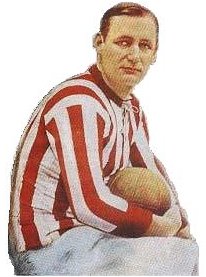Brown family (Argentina) on:
[Wikipedia]
[Google]
[Amazon]
The Brown family is an Argentine family of Scottish descent known for producing a number of high-profile footballers during the 1920s in

Argentina
Argentina (), officially the Argentine Republic ( es, link=no, República Argentina), is a country in the southern half of South America. Argentina covers an area of , making it the second-largest country in South America after Brazil, th ...
.
Arrival in Argentina
On 22 May 1825, James Brown, Sr., a farm labourer, and his wife Mary ( née Hope) leftLeith
Leith (; gd, Lìte) is a port area in the north of the city of Edinburgh, Scotland, founded at the mouth of the Water of Leith. In 2021, it was ranked by ''Time Out'' as one of the top five neighbourhoods to live in the world.
The earliest ...
, Scotland to start a new life in Argentina. On arriving in Argentina, the Browns settled in the short-lived British settlement of Monte Grande before moving to Buenos Aires
Buenos Aires ( or ; ), officially the Autonomous City of Buenos Aires ( es, link=no, Ciudad Autónoma de Buenos Aires), is the capital and primate city of Argentina. The city is located on the western shore of the Río de la Plata, on South ...
after the failure of the settlement.
Footballing dynasty
James Brown Jr., the youngest son of James and Mary, fathered nine sons, seven of whom became footballers for Alumni Athletic Club. Five of those seven would also play internationally forArgentina
Argentina (), officially the Argentine Republic ( es, link=no, República Argentina), is a country in the southern half of South America. Argentina covers an area of , making it the second-largest country in South America after Brazil, th ...
. The eldest son to play football was Diego Hope (b. 1875). The next oldest, Jorge Gibson (b. 1880, nicknamed ''el Patricarcho'') was the most accomplished member of the family. He would play in ten Argentine championships and representi Argentina 23 times. Jorge was treasurer of Alumni at the point it was disbanded. Jorge played in Argentina's first international in a match against Uruguay in Montevideo. The next oldest, Carlos Carr Brown (b. 1882), was the first to make an impact on Argentine football. Carlos learned his football in Britain
Britain most often refers to:
* The United Kingdom, a sovereign state in Europe comprising the island of Great Britain, the north-eastern part of the island of Ireland and many smaller islands
* Great Britain, the largest island in the United King ...
before returning to Argentina and representing the national team twice. Tomás (b. 1884) turned out for Alumni but was not capped internationally. Ernesto Alejandro (b. 1885; nicknamed ''el Pacifico'' for his peaceful nature) once scored six goals in a match for Alumni. The two youngest, Alfredo
Alfredo (, ) is a cognate of the Anglo-Saxon name Alfred and a common Italian, Galician, Portuguese and Spanish language personal name.
People with the given name include:
* Alfredo (born 1946), Brazilian footballer born as Alfredo Mostarda F ...
(b. 1886) and Eliseo (b. 1888), also played international football.
A cousin of the brothers, Juan Domingo, also played for Argentina during the same era. Between 1906 and 1916 Juan played 36 times for the national team.
In 1910 when Argentina
Argentina (), officially the Argentine Republic ( es, link=no, República Argentina), is a country in the southern half of South America. Argentina covers an area of , making it the second-largest country in South America after Brazil, th ...
played Uruguay
Uruguay (; ), officially the Oriental Republic of Uruguay ( es, República Oriental del Uruguay), is a country in South America. It shares borders with Argentina to its west and southwest and Brazil to its north and northeast; while bordering ...
in the Copa Centenario Revolución de Mayo
The Copa Centenario Revolución de Mayo was an international football tournament, held in Argentina from 29 May to 12 June 1910, and organized by the Argentine Football Association. It was the first international tournament in South America where ...
, three Browns played for Argentina: Jorge
Jorge is a Spanish and Portuguese given name. It is derived from the Greek name Γεώργιος (''Georgios'') via Latin ''Georgius''; the former is derived from (''georgos''), meaning "farmer" or "earth-worker".
The Latin form ''Georgius'' ...
, Juan Domingo and Ernesto Ernesto, form of the name Ernest in several Romance languages, may refer to:
* ''Ernesto'' (novel) (1953), an unfinished autobiographical novel by Umberto Saba, published posthumously in 1975
** ''Ernesto'' (film), a 1979 Italian drama loosely ba ...
.
Family tree

References
{{Alumni Athletic Club Argentine people of Scottish descent History of football in Argentina Sports families of Argentina Families of Scottish ancestry